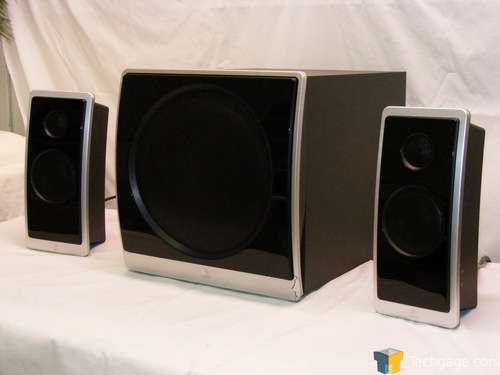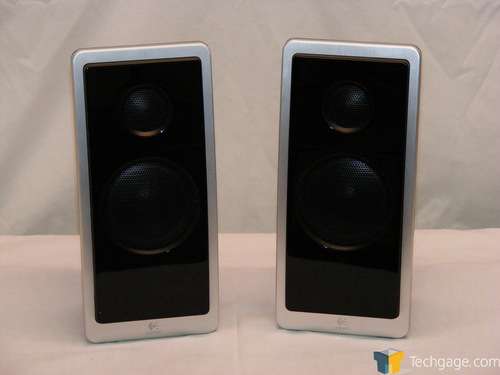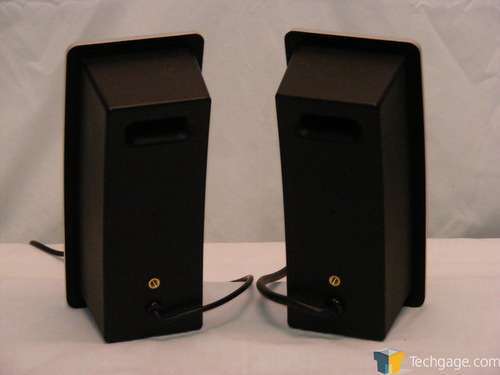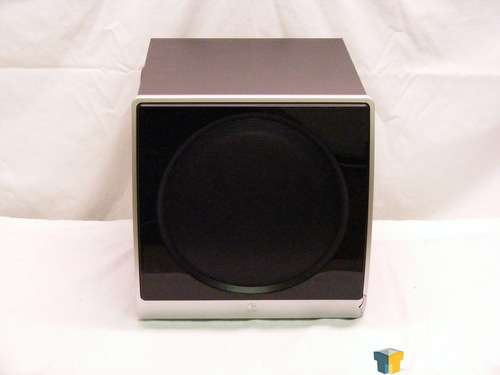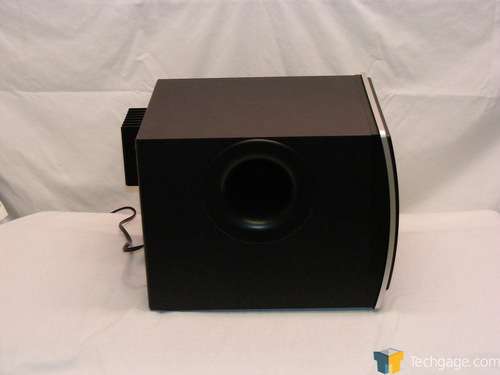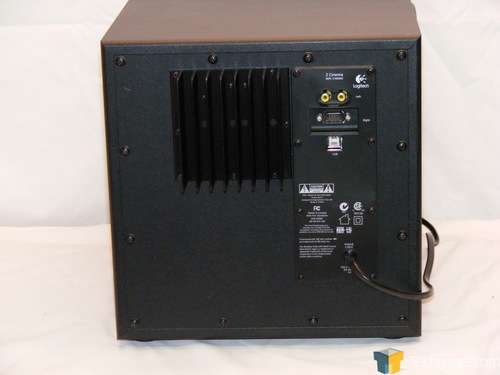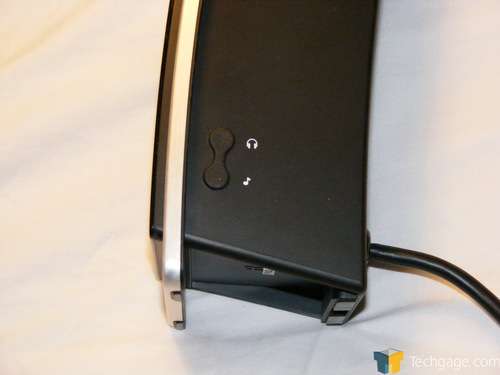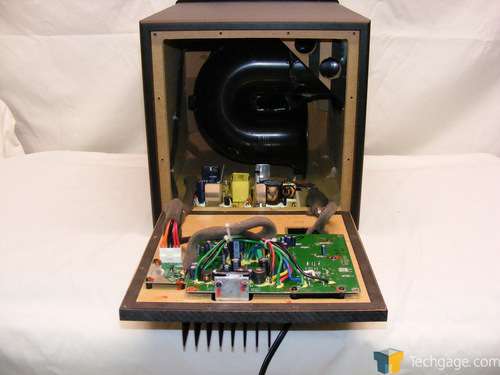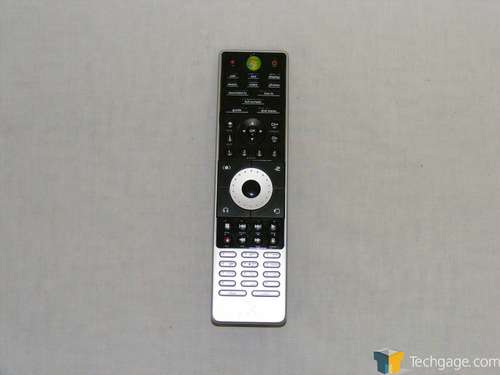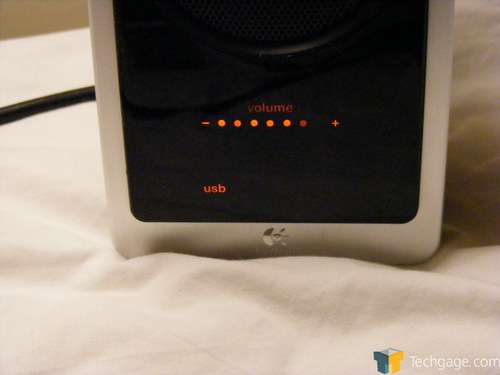- Qualcomm Launches Snapdragon 4 Gen 2 Mobile Platform
- AMD Launches Ryzen PRO 7000 Series Mobile & Desktop Platform
- Intel Launches Sleek Single-Slot Arc Pro A60 Workstation Graphics Card
- NVIDIA Announces Latest Ada Lovelace Additions: GeForce RTX 4060 Ti & RTX 4060
- Maxon Redshift With AMD Radeon GPU Rendering Support Now Available
Logitech Z Cinema Speaker System
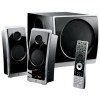
Logitech unveiled their Z Cinéma speaker system at this year’s CES, to plenty of fanfare. The system blends a refined two-way satellite design with a robust, powerful subwoofer. We take the latest high performance Z-series PC speaker system for a spin, and find lots of cause for excitement.
Page 3 – Features Overview
We’re taking a look at Logitech’s latest high-performance speaker system, the Z Cinéma. The Z Cinéma system relies on a combination of potent high-fidelity loudspeakers and intelligent DSP processing to produce a convincing surround sound experience. Here’s a look at the Z Cinéma system from a technical standpoint.
The Z Cinéma System is a 2.1-channel system, yet with just a pair of satellites and a substantial subwoofer, it promises a complete surround sound experience. It accomplishes this by using a DSP algorithm to produce a virtual sound field that extends past the speakers themselves.
There are a number of such algorithms that have been developed by a variety of companies, such as SRS and Dolby. By applying phase shift, crossfading, and frequency-response transfer functions, these algorithms effectively trick your ear and brain into hearing sounds that seem to come from thin air. In the case of Logitech’s Z Cinéma, they’ve chosen SRS Labs’ TruSurround HD processing.
Because the number of speakers required is reduced by three, Logitech is able to splurge on the satellite speakers themselves, and has stepped up to a two-way configuration that’s similar to that used in their Z-10 two-piece speaker system, combining a separate midwoofer and tweeter driver in a svelte enclosure that’s trimmed with glossy black plastic and brushed aluminum accents.
The two-way configuration provides greatly enhanced high-frequency extension, but it also allows the satellite speakers to deliver high frequencies with less distortion, and greater clarity and definition than a single “full-range” driver, thanks to the low-mass “dome” diaphragm geometry. Each satellite is vented at the rear, which adds warmth and richness to their lower midrange and upper bass performance.
The subwoofer is similar to others in the Z series – it uses a massive front-firing bass driver, and is vented to the side with a gaping reflex port. It’s a configuration that has worked well for Logitech in the past, and is capable of quite high output. The driver itself has a thick, stiff paper cone and a beefy large-roll foam surround, allowing it to accommodate large ‘excursions’ of the cone and generate tons of air movement both from the cone itself and from the enormous port.
The back panel of the subwoofer contains connections for the satellite speakers and the USB input connection for the host PC, as well as a heatsink to dissipate waste heat from the Z Cinéma’s hybrid amplifier. The right satellite speaker also contains a 3.5mm headphone output jack, as well as a 3.5mm stereo line input, for connecting a portable music player. Source switching is accomplished through the infrared remote control.
Open up the Z Cinéma subwoofer, and this is what you’ll find. The Z Cinéma’s subwoofer is devoid of any large transformers – the power supply is the small sandy-colored circuit board mounted to the base of the sub’s enclosure. The switching-type power supply eliminates any need for massive transformers – it simply steps down the line voltage.
The amplifier circuitry itself is mounted to the back panel, and the Class-AB section (which provides power to the satellite speakers) dissipates its heat through the rear panel heatsink. The brawnier 110-watt Class D amplifier that powers the subwoofer requires no heatsinking, thanks to its special all-digital “switching” design. The enormous bass port is curved in the shape of a ‘U’ to allow the compact enclosure to accommodate its length.
The Z Cinéma system also includes a wireless infrared remote, which integrates full Windows Media Center functionality, as well as controls for the system’s volume, channel levels, tone settings, and the SRS TruSurround mode. The system also provides visual feedback via a LED display on the right satellite speaker, which also houses the system’s IR receiver.
Next, we’ll take a look at the control software provided with the Z Cinéma system, and what my listening testing revealed.
|
|
Support our efforts! With ad revenue at an all-time low for written websites, we're relying more than ever on reader support to help us continue putting so much effort into this type of content. You can support us by becoming a Patron, or by using our Amazon shopping affiliate links listed through our articles. Thanks for your support!




